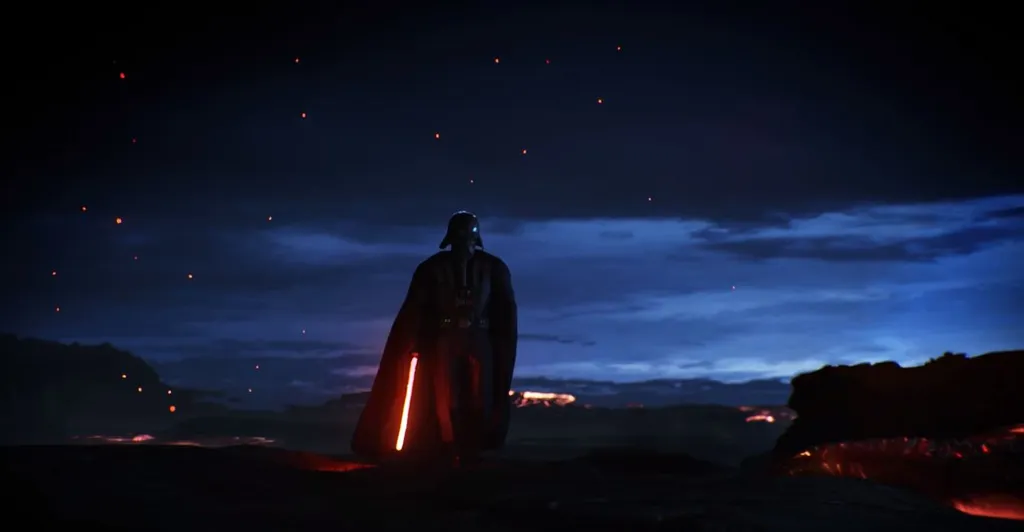Disney’s ILMxLab has been busy of late. In addition to the free Trials on Tatooine virtual reality experience for HTC Vive, the studio released a 360-degree video that serves as a prequel to the upcoming Rogue One: A Star Wars Story. The POV experience, available through Verizon, chronicles the first discovery of the Death Star and puts viewers inside the cockpit of an X-Wing pilot. ILMxLab also worked with Electronic Arts and developer DICE to allow PlayStation VR users to pilot those rebel ships in the upcoming Dec. 6 Star Wars Battlefront Rogue One: X-Wing VR Mission.
Rob Bredow, the chief technology officer at Lucasfilm, has overseen the company’s R&D division, ILMxLab, since its inception. Bredow was recently in Milan, Italy for the VIEW Conference. He’s currently living in London and working on the new Han Solo movie with directors Phil Lord and Christopher Miller at Pinewood Studios. He told UploadVR that virtual reality is now part of the production process for the Star Wars films, something that commenced with Rogue One and director Gareth Edwards.
“One of my favorite quotes that Gareth said was after he’d been in VR like two or three minutes, ‘This looks way better in real life,’” Bredow said. “And I leaned over to Doug Chiang and asked him if his guys had already built one of these, and he’s like, ‘No, he’s talking about virtual reality right now, being inside the ship is way better than having to look at the drawings or 2D printouts or those kinds of things.’”
https://www.youtube.com/watch?v=_IrhR1-CNoE
Bredow said that his team at ILMxLab is constantly learning as they experiment with different experiences across emerging platforms.
“There were so many things we learned from Trials on Tatooine,” Bredow said. “That was a great learning experience because we really did build that experience up as we were learning different things. We learned hundreds of things; probably thousands of things. One specific takeaway was in the sound design area. We walked away after Trials of Tatooine saying we need this close collaboration between the sound designers and the experience creators and the best situation is that that’s going on hand-in-hand, so that we can teach other things as we go through the process of making these experiences.”
Several of the early VR projects from ILMxLab, including Trials on Tatooine and the Magic Leap mixed reality droid experience, were built using Epic Games Unreal Engine 4 technology.
“We really are at the early stages of game engine technology for VR, and there are a whole bunch of challenges that come along with 90 frames per second and these very high frame rates, and of course everything being in stereo,” Bredow said. “But there are a whole bunch of opportunities that creates, as well. What we’re seeing right now is a lot of people taking the tools that happen to be available at the time that VR got this resurgence in popularity and retrofitting them into the best fit for VR.”
Although his team is working with game engine technology, they’re not focusing on game-length experiences. Bredow promised that new VR experiences like the one featuring Darth Vader that was recently announced, will be longer than Trials on Tatooine.
“Right now the kind of things we’re looking at are still nowhere near as long as something like Skyrim, and some of that is actually driven by our desire to really make very high quality content,” Bredow said. “And there’s certain economics that come with that. You have to be able to have enough time to put into those experiences to really warrant a many hour experience, and right now honestly virtual reality is in its early days so you don’t get to make that same sort of investment, so the experience length is going to be a little bit shorter as a result.”
ILMxLab is very familiar with PS VR thanks to its work with EA and DICE. Bredow said he’s excited about Sony’s new platform because it allows gamers to plug into a box they probably already have in their living room, and it’s dramatically less expensive than HTC Vive and Oculus Rift if you already have the existing components.
“The living room is a really great way to experience VR and a lot of people are going to have really good experiences and we’re going to see a much bigger user base,” Bredow said. “So today we’re in a ‘chicken and the egg’ situation where everyone’s wondering how big is that user base going to be, how much time can I invest in these experiences to be able to sell them from a financial sense. After these holidays and into next year we’ll see an audience that is growing and more interested in virtual reality.”
At the same time the home VR scene is expanding, a new wave of virtual reality arcades and experiences are popping up around the world. That includes established companies like IMAX, which has partnered with Starbreeze, as well as startups like The Void, which launched Ghostbusters: Dimenion earlier this year at Madame Tussaud’s.
“We’re really interested at ILMxLab in location-based entertainment as it relates to virtual reality,” Bredow said. “We think there are things we can do in that space where you really control the environment and you can put a higher-quality headset on someone’s head and power it with a machine that might be five times as powerful as the one you have at home. The haptics and other things you can do in those environments can be very unique and very fun and give people a different kind of experience. The home VR experience is going to be very interesting and there’s a ton to explore there, but then when you add other elements of haptics and environment and things you can do in a location that you can’t do at your house that starts to get really interesting.”





























